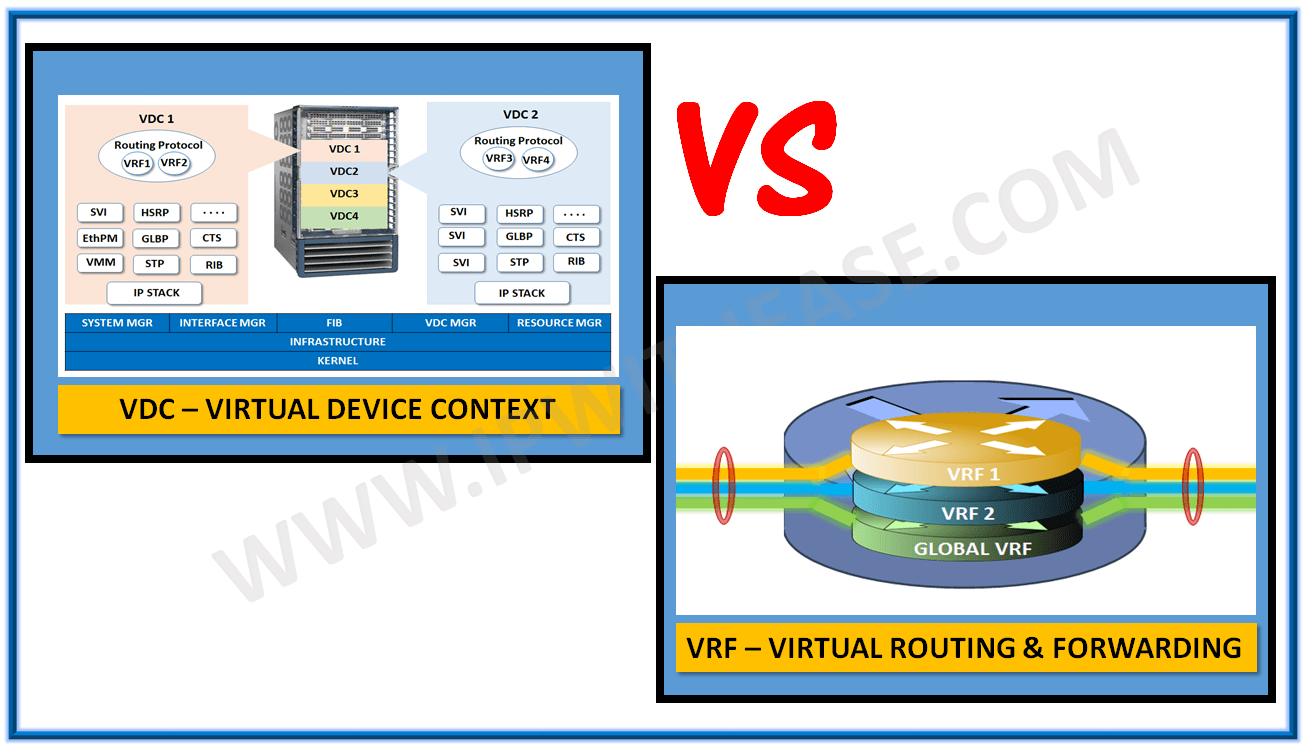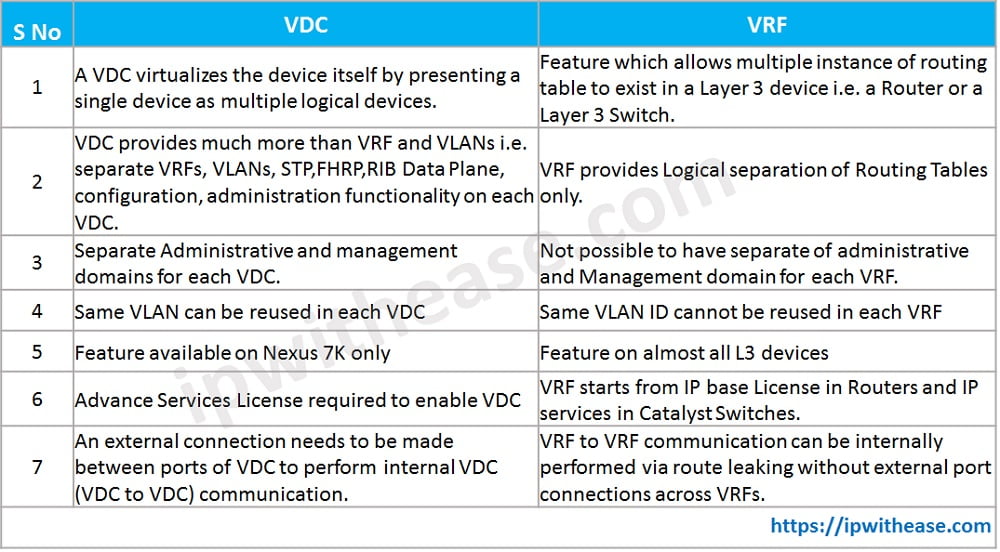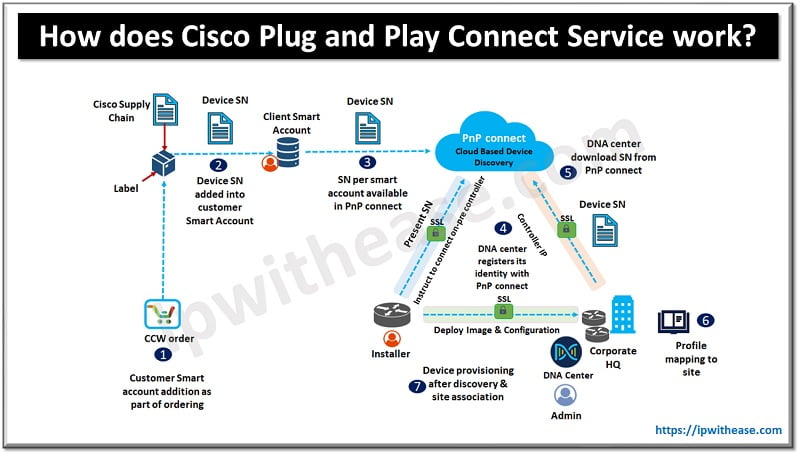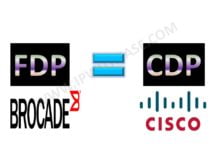
Before discussing VDC vs VRF, let’s understand the two terms first.
VDC (Virtual Device Contexts) is a virtual device. It provides much more than VRF and VLANs. A VDC can be regarded as one physical switched separated into several virtual switches. Each such virtual switch has its own resource allocation and a protected memory space. Thus, we can say that a VDC virtualizes the device itself by presenting a single device (the physical switch) as multiple logical devices. Within that VDC it can contain its own unique and independent set of VLANs and VRFs.
Related- Admin vs Default VDC
Related – VLAN Interview Questions
VRF (Virtual Routing & Forwarding) is a technology that allows multiple instances of a routing table to co-exist within the same router at the same time.Because the routing instances are independent, overlapping IP addresses can be used without conflicting with each other.
The multiple Routing instances can be made to traverse different path (ie take different outgoing interfaces).VRFs are the same methods of network isolation/virtualization as VLANs. VLANs are used at the L2 and VRFs are L3 tools. VRFs are to routing table like VLANs are to LANs. Using Virtual routing and forwarding we are virtualizing routing table into multiple routing tables, similarly to VLANs used to virtualize LANs.
VDC vs VRF : Comparison Table
Below table describes the difference between VDC and VRF in detail –
| S.No. | VDC | VRF |
|---|---|---|
| 1 | A VDC virtualizes the device itself by presenting a single device as multiple logical devices. | Feature which allows multiple instance of routing table to exist in a Layer 3 device ie a Router or a Layer 3 Switch. |
| 2 | VDC provides much more than VRF and VLANs ie separate VRFs, Vlans, STP,FHRP,RIB Data Plane, configuration, administration functionality on each VDC. | VRF provides Logical separation of Routing Tables only. |
| 3 | Separate Administrative and management domains for each VDC. | Not possible to have separate of administrative and Management domain for each VRF. |
| 4 | Same VLAN can be reused in each VDC | Same VLAN ID cannot be reused in each VRF |
| 5 | Feature available on Nexus 7K only | Feature on almost all L3 devices |
| 6 | Advance Services License required to enable VDC | VRF starts from IP base License in Routers and IP services in Catalyst Switches. |
| 7 | An external connection needs to be made between ports of VDC to perform internal VDC (VDC to VDC) communication. | VRF to VRF communication can be internally performed via route leaking without external port connections across VRFs. |
![]()
Download the difference table here.
Related- VRF vs Virtual Router




